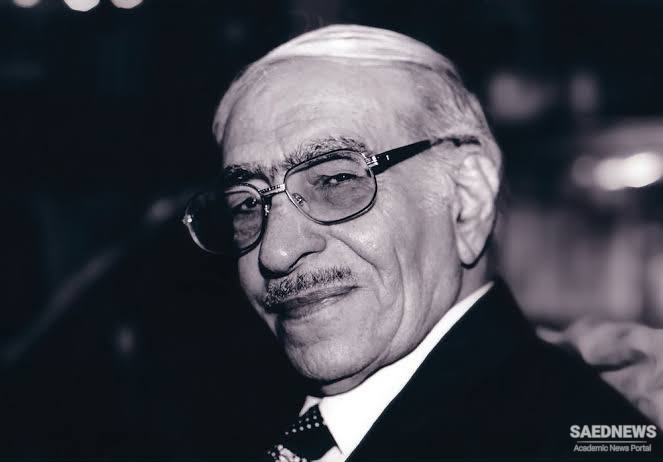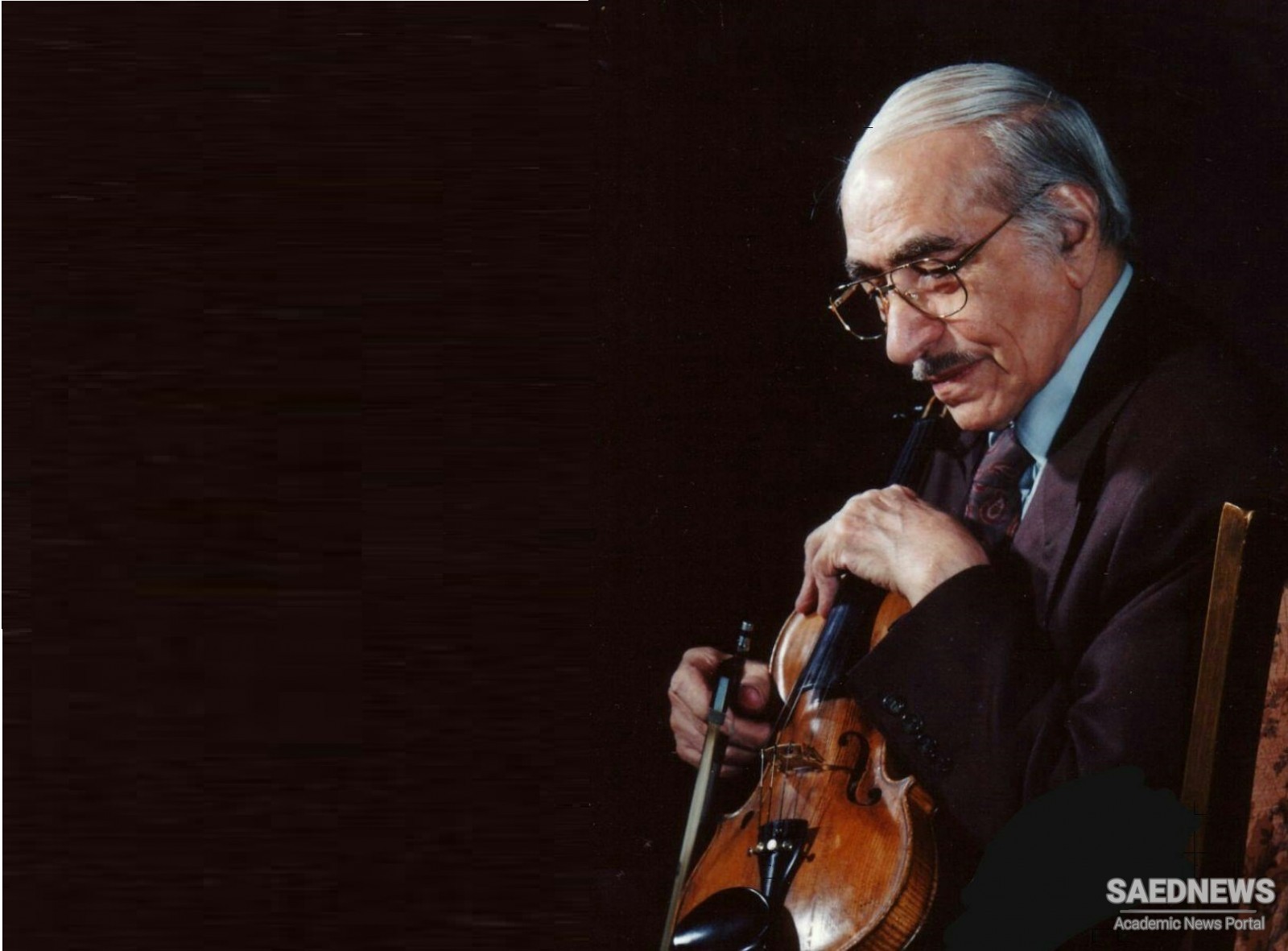
Although Tajvidi struck the main vein of his artistic success in the Gulha programmes, he continued to be active in teaching music at music schools, university (for a short while), and at home (most of the time). He had begun his work with orchestras using solo vocalists performing programmes whose lyrics were composed by song-writers like Rahi Mu‘ayyiri, Mu‘ini Kirmanshahi, Bizhan Taraqqi, Isma‘il Navvab Safa, and Munira Taha, from which he gained quite a considerable reputation. Having been raised in a traditionally cultured family with deep artistic values, his erudition in classical Persian literature, indefatigable lust for learning, constant association with eminent maestros like Saba, Mukhtari and Murtiza Mahjubi, and his unremitting endeavours toward reaching the zenith of his talent, by his forties made him an unrivalled composer and prominent instrumentalist.
He played the violin in numerous recorded Gulha programmes, including both solo performances and performances accompanied by other instrumentalists (playing the tombak and other instruments) and with vocalists like Husayn Qavami and Ghulam-Husayn Banan. His style is a combination of the techniques of Abu’l-Hasan Saba and Husayn Yahaqqi with Mukhtari’s violin modes to which he juxtaposed his own innovative techniques. The exalted level of his musical grammar in performing Persian classical musical sentences, his preservation of the classical musical framework whilst expressing his inner idiosyncratic romantic spirit, the vividness of the sound of his instrument and his powerful technique are qualities of his performance that have unfortunately been less accentuated by violinists from 1980s onwards.
In respect to the Gulha programmes, Tajvidi was well-known as a maestro composer. In the beginning, he performed in orchestras with one solo vocalist, but, influenced by the magnificent music of ‘Ali Naqi Vaziri and his student Ruhu’llah Khaliqi, he soon grasped the importance and significance of harmony and orchestration in the music of his time. He studied harmony, counterpoint, and orchestration with the eminent Iranian composer Hushang Ustuvar (1929-1979). Tajvidi’s compositions reflect the immediate influence of maestros like Murtiza Mahjubi, Rukn al-Din Mukhtari and Husayn Yahaqqi, which he complemented by his own detailed preludes, strident harmony, and the musical sectionings. The majority of these compositions are regarded amongst the most beautiful of classical Persian musical compositions. His recorded violin performances are noticeably vivid and striking, which seems to have been his conscious and deliberate aim in all the programmes that he performed in as violinist, composer, or conductor. In the final years of his life, he focused on playing of the setar with greater seriousness and made many efforts to publish his compositions in the form of books and CD albums. His students range from the young musician, Kavih Kishavarz, to maestro Farhad Fakhr al-Dini, who were active in the orchestra and performed his compositions. His works include books like Athari dar Chahargah, (Tehran 1985), Musiqi-yi Irani, (Tehran, Surush 2000), and the albums Yadigar-i Ustad (violin-navazi, setar-navazi, Tehran 2001). In a word, Tajvidi was one of the main pillars of the Gulha.


 Shahram Nazeri Sings for Hossein Alizadeh
Shahram Nazeri Sings for Hossein Alizadeh














































